Filter by
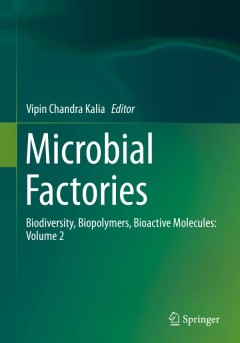
Microbial Factories
Dr. Vipin Chandra Kalia is presently working as Chief Scientist at Microbial Biotechnology and Genomics, CSIR-Institute of Genomics and Integrative Biology, Delhi. He is a Professor of Academy of Scientific and Innovative Research (AcSIR), Delhi. He obtained his M.Sc. and Ph.D. degrees in Genetics from the Indian Agricultural Research Institute, New Delhi. He has been elected as: (1) Fellow of …
- Edition
- 1
- ISBN/ISSN
- 978-81-322-2594-2
- Collation
- XI, 355
- Series Title
- -
- Call Number
- -
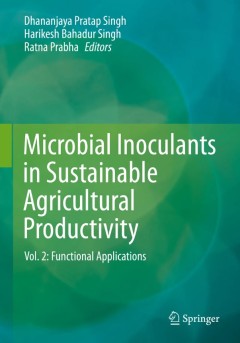
Microbial Inoculants in Sustainable Agricultural Productivity
The performance of crops in the soil largely depends on the physico-chemical components of the soil, which regulate the availability of nutrients as well as abiotic and biotic stresses. Microbes are the integral component of any agricultural soil, playing a vital role in regulating the bioavailability of nutrients, the tolerance to abiotic and biotic stresses and management of seed-borneand soi…
- Edition
- 1
- ISBN/ISSN
- 978-81-322-2642-0
- Collation
- XVI, 308
- Series Title
- -
- Call Number
- -

Microbial Inoculants in Sustainable Agricultural Productivity
The performance of crops in the soil largely depends on the physico-chemical components of the soil, which regulate the availability of nutrients as well as abiotic and biotic stresses. Microbes are the integral component of any agricultural soil, playing a vital role in regulating the bioavailability of nutrients, the tolerance to abiotic and biotic stresses and management of seed-borneand soi…
- Edition
- -
- ISBN/ISSN
- 978-81-322-2642-0
- Collation
- Number of Pages XVI, 308
- Series Title
- -
- Call Number
- -

Microbial Inoculants in Sustainable Agricultural Productivity
How to achieve sustainable agricultural production without compromising environmental quality, agro-ecosystem function and biodiversity is a serious consideration in current agricultural practices. Farming systems’ growing dependency on chemical inputs (fertilizers, pesticides, nutrients etc.) poses serious threats with regard to crop productivity, soil fertility, the nutritional value of far…
- Edition
- 1
- ISBN/ISSN
- 978-81-322-2645-1
- Collation
- XVIII, 343
- Series Title
- -
- Call Number
- -
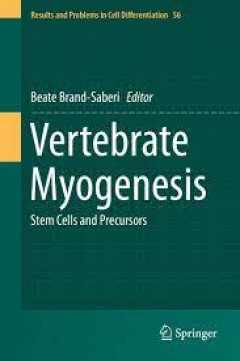
Vertebrate Myogenesis Stem Cells and Precursors
This book addresses the differentiation control of skeletal muscle in different locations of the vertebrate body Particular attention is paid to novel regulatory molecules and signals as well as the heterogeneity of origin that have revealed a developmental overlap between skeletal and cardiac muscle. Different functional muscle groups are the product of the evolution of the vertebrate classes,…
- Edition
- -
- ISBN/ISSN
- 978-3-662-44608-9
- Collation
- 2 b/w illustrations, 23 illustrations in colour
- Series Title
- -
- Call Number
- -
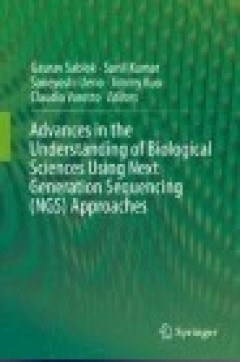
Advances in the Understanding of Biological Sciences Using Next Generation Se…
Provides a global view of the recent advances in the biological sciences and the adaption of the pathogen to the host plants revealed using NGS. Molecular Omic’s is now a major driving force to learn the adaption genetics and a great challenge to the scientific community, which can be resolved through the application of the NGS technologies. The availability of complete genome sequences, the …
- Edition
- Ed. 1
- ISBN/ISSN
- 978-3-319-17157-9
- Collation
- XII, 241
- Series Title
- -
- Call Number
- 630 ADV a

Advances in Wheat Genetics: From Genome to Field: Proceedings of the 12th Int…
This proceedings is a collection of 46 selected papers that were presented at the 12th International Wheat Genetics Symposium (IWGS). Since the launch of the wheat genome sequencing project in 2005, the arrival of draft genome sequences has marked a new era in wheat genetics and genomics, catalyzing rapid advancement in the field. This book provides a comprehensive review of the forefront of wh…
- Edition
- Ed. 1
- ISBN/ISSN
- 978-4-431-55675-6
- Collation
- XVI, 445
- Series Title
- -
- Call Number
- 630 ADV a
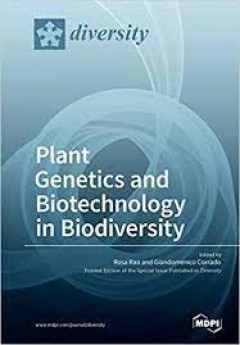
Plant Genetics and Biotechnology in Biodiversity
Plant genetic resources for food and agriculture (PGRFA) have been collected and exchanged for centuries. The rapid development of novel tools for genetic and phenotypic analysis is changing the way we can uncover diversity and exploit its value in modern agriculture. The integration of novel analytical tools is crucial for translating research into much-needed, more efficient management and us…
- Edition
- -
- ISBN/ISSN
- 978-3-03842-004-0
- Collation
- -
- Series Title
- -
- Call Number
- 570 PLA
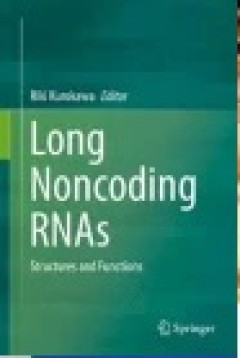
Long Noncoding RNAs: Structures and Functions
This book presents a common principle of actions of long noncoding RNAs (lncRNAs) from points of view at the atomic, molecular and cellular levels. At the atomic level, chemical studies of ribonucleic acids explain the chemical behavior of lncRNAs. Structural biological analysis of lncRNAs and its binding proteins also reveal the precise mechanisms of their actions. Molecular biological approac…
- Edition
- -
- ISBN/ISSN
- 978-4-431-55576-6
- Collation
- -
- Series Title
- -
- Call Number
- -
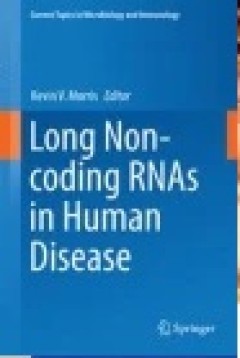
Long Non-coding RNAs in Human Disease
This volume focuses on the roles of long non-coding RNAs (lncRNAs) in contexts ranging from human cancers to cardiovascular disease and ageing. The role of lncRNAs in X-inactivation and those lncRNAs derived from pseudogenes, past retroelements integrated within the human genome, as well as the role these pseudogene-derived lncRNAs play in cancer development are discussed in detail. Further, th…
- Edition
- -
- ISBN/ISSN
- 978-3-319-23907-1
- Collation
- -
- Series Title
- -
- Call Number
- -
 Computer Science, Information & General Works
Computer Science, Information & General Works  Philosophy & Psychology
Philosophy & Psychology  Religion
Religion  Social Sciences
Social Sciences  Language
Language  Pure Science
Pure Science  Applied Sciences
Applied Sciences  Art & Recreation
Art & Recreation  Literature
Literature  History & Geography
History & Geography